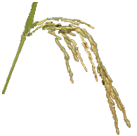In danger of stereotyping or propagating an over simplified view of any country, we want to specify that the following are just our memories, the characteristics that we best remember from Vietnam, Laos, Cambodia, and Thailand in the order we traveled through them.
Vietnam
1) Conical hats actually worn by many, especially farmers
2) Funky 2-tone “echo horns” bouncing back and forth between the two tones and slowly fading, used liberally by many motorized vehicles
3) French bread and banh mi sandwiches made with French bread, a meat purée with cucumbers & other vegetables, and hot sauce.
4) Only roman letters used for Vietnamese, no indecipherable script. The only continental East Asian country without such a non-western script.
5) Common restaurant signs: Thit Cho, Tim Cat (Adam’s “Meeoww!” whenever Tim Cat was said), and Com Pho, all meaning respectively: dog meat, internal organs, and rice & noodles.
6) Motorbikes! Lots of Motorbikes, especially in Hanoi.
7) Narrow, tall houses/buildings with very ornate & colorful fronts, but bare concrete sides, many of them new as of 2001 (year built often written in big print at the top of the highest eave).
 Rampant Communist Propaganda: old-school communist painted signs and 5am broadcasts over loudspeakers reaching even the remotest rural areas.
Rampant Communist Propaganda: old-school communist painted signs and 5am broadcasts over loudspeakers reaching even the remotest rural areas.
7.5) Ho Chi Min posters, billboards, and signs everywhere. “Uncle Ho”
9) Hard bargaining, such as restaurant owners changing the agreed upon price when it came time to pay, as much as double the original price.
10) Double pedaling: two people on a bike, but the person sitting on the back rack shares the pedals.
11) Most trucks are the same old-school model with the cab overhanging the sides of the front wheels and rounded windows.
Lao
1) Very few people
2) Old Growth forests in mountains (hwy 8 in east-central Lao from Vietnam)
3) Wooden houses on stilts (instead of concrete or brick)
4) People, especially children, yelling “Sabaidee!” to us instead of the English equivalent: “Hello,” thus for the first and only time on the trip people using their own language when initiating a greeting with us.
5) Brand new Toyota “Hilux” 4-door champagne color pickup trucks seem to be the only model of automobile on Lao’s sparsely trafficked highways.
6) Sticky rice that comes in little baskets. “Sticky” meaning one must use one’s hands to ball it up to eat, chop sticks are nearly impossible for the task.
7) Beer Lao tastes good, but is expensive (US$1 for 0.5L compared to China and Vietnam US$0.25 for 0.6L)
 Swimming in Rivers – rivers that were clean enough for the first time on the trip.
Swimming in Rivers – rivers that were clean enough for the first time on the trip.
9) Other bicycle tourists, usually seeing one group a day
10) Freely roaming cows, pigs, goats, and chickens instead of them being tied or fenced.
11) Traditional dress for women (scarves and long skirts)
12) We started siesta time due to the mid-day heat (12:00-3pm)
13) Loud music with big bass from select homes in the early evenings when people would receive their freshly charged car battery for electricity during the evening.
Cambodia
1) Burning down the jungle for the first 140km in the north from Lao, making it look like a war zone. This area also had very few people.
2) The Mekong River and biking 200km or so through the “endless village” along its banks on a rough dirt road.
3) More wooden houses on stilts (often with thatched roofs)
4) Tall white cows/oxen and big wooden-wheeled wagon carts with 2-cow yokes hauling hay, reminiscent of the American West wagon.
5) ATMs (the few there are) only disperse US dollars, and every one accepts dollars and gives Cambodian riel as change if less than US$1. (4000 riel/ US$1)
6) Pre-made food at restaurant stalls, fast and cheap (500 riel for a serving of rice, 1000 riel for one serving of a vegetable or meat dish)
7) People eat early lunches (10-11am)
 Instant noodles common, even in nicer restaurants serving “noodles”
Instant noodles common, even in nicer restaurants serving “noodles”
9) Many loud weddings set up right near the main roads, with blaring Cambodian music and big bass starting early in the morning and lasting nearly all night.
10) Common for people, especially women, to wear pajamas out and about.
11) Sarongs with muscular men
12) Kramas (checkered wraps used as scarves or bandanas, part of Khmer culture.)
13) Brand new Lexus SUV’s are the most common automobile, with “Lexus” written in big print on the side of the vehicle.
14) Older mid 1990s Toyota Camry’s are the 2nd most common automobile.
15) Barren, dusty, flat land/rice fields as far as one could see in western Cambodia leading to Thailand.
16) Cambodians appear to look a little Indian, seemingly conforming to the Cambodian creation story connected to Hinduism, that the first Cambodians were half Indian and half Naga (a mythical Hindu sea serpent).
Thailand
1) Big, nice, developed-country quality paved roads and divided 4-lane highways and plenty of cars and pickup trucks to go with them.
2) Ride on the left side of the road
3) Purposefully loud truck and motorbike (“rice rocket”) exhaust pipes
4) Many street lights
5) Green vegetation and obviously effective land management
6) Black and white cows off of county roads strongly reminding us of Minnesota.
7) 7-11 convenient stores everywhere. In Bangkok, one nearly every block.
 Take shoes off in some rural convenience stores
Take shoes off in some rural convenience stores
9) Most Thai dogs “attack” bikes barking and chasing
10) Most common meal: fried rice with assorted veggies & Phad Thai


